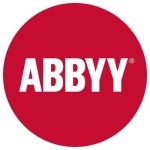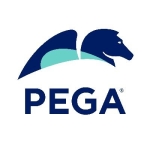What is our primary use case?
The use cases for Automation Anywhere are industry-agnostic and sector-agnostic, allowing for automation of processes that involve human interaction, mundane tasks, and large volumes. With the help of AI, we can now automate a lot of unstructured data, which wasn't possible before, so it's not limited to any specific sector or process. Whether it's HR, marketing, sales, operations, or engineering design, any of those can be considered for automation.
How has it helped my organization?
The main benefits of Automation Anywhere include improved operational efficiency, enhanced productivity savings, increased cost savings, new revenue streams, and a reduction in regulatory human errors. These are some of the major benefits it provides. For example, if a human takes one hour to perform a transaction that involves navigating through multiple systems and inputting data, Automation Anywhere can reduce that time significantly. The bot can complete the task in about 20 minutes, saving roughly 40 minutes per transaction, which translates to a 60%-66% time saving, enhancing overall productivity and cost efficiency.
What is most valuable?
They have introduced numerous AI-related enhancements in their product, making them the first among their competitors to develop a reasoning engine. Their PRE reasoning engine is particularly noteworthy, and they have quickly integrated Generative AI into their document automation product. Additionally, they offer a variety of other AI features and have designed the platform to be cloud-native. The AI features they have implemented stand out; they are indeed leading the pack. This strategy is impressive and effectively empowers their product with a wide range of AI capabilities, which are increasingly important in today’s tech landscape, especially with the rise of AI, Generative AI, and Agentic AI.
Automation Anywhere also provides Agentic AI-related APIs and is currently testing Agentic process automation in its early stages. In terms of product capabilities and AI integration, I would definitely rate them a ten out of ten. They are the fastest to reach this level of advancement compared to others, who seem to be lagging behind. For example, Blue Prism is progressing quite slowly, and while Power Automate has some AI features, they do not match the scale that Automation Anywhere has achieved.
What needs improvement?
Its pricing definitely needs to be more competitive. When licensing costs are high, we cannot use this tool for automation. Instead, we might opt for a lower-cost tool like Power Automate which is 50% less expensive.
Power Automate offers very seamless integration with the Microsoft ecosystem, including Azure cloud services and other Microsoft products. In contrast, Automation Anywhere has to rely on external LLMs for integrations. If Automation Anywhere can improve the ease of these integrations and provide them natively within the platform, it would greatly enhance its appeal.
For how long have I used the solution?
I have been working with Automation Anywhere for over the last eight years, although not extensively in my current role. In previous journeys, I have used it for around three to four years. Currently, we use Automation Anywhere, but not extensively.
What do I think about the stability of the solution?
At this moment, I'm not sure about the stability of Automation Anywhere, but in previous experiences, I faced challenges with stability, which required ticket submissions for support. We encountered several challenges related to platform and technical issues. For instance, sessions would occasionally get disconnected unexpectedly. In those cases, we would raise a ticket with the vendor to get support. However, since we haven't been using the system extensively, we haven't faced many issues.
What do I think about the scalability of the solution?
All these automation platforms, including Automation Anywhere, are highly scalable; depending on volume, you can adjust the number of bots, scaling instantaneously in the cloud. For on-prem solutions, one must ensure they have the necessary infrastructure ready for scaling.
While it is easy to scale with Automation Anywhere, I have not experienced extensive scaling in my previous encounters. The maximum number of bots we had was around 20.
How are customer service and support?
I haven't raised many tickets recently to evaluate their technical support, but I know they have a dedicated partner manager. It has been good in my previous experience.
How would you rate customer service and support?
Which solution did I use previously and why did I switch?
We are also using UiPath, Blue Prism, Power Automate, and the Microsoft stack. Mainly, the license costs of UiPath, Automation Anywhere, and Blue Prism are high, so we use Power Automate and Power Platform heavily.
How was the initial setup?
It is generally easy to deploy. We use Automation Anywhere with both AWS and Azure.
Maintenance is indeed required for Automation Anywhere; you have to follow the vendor's product patches and version upgrades to keep it maintained.
Upgrading Automation Anywhere follows a standard process that they provide detailed instructions for, and we adhere to those guidelines. The upgrade process feels similar to any other software platform; I don't find anything particularly complex or different about it.
There is a separate team for bot maintenance, and if the bots are stable, maintenance needs tend to be low. However, if issues arise, maintenance efforts can significantly increase.
What was our ROI?
The return on investment from Automation Anywhere varies based on the business case and the benefits versus costs involved; for simpler RPA use cases, ROI can typically be achieved within a year.
What's my experience with pricing, setup cost, and licensing?
Pricing needs to be more competitive, both in terms of licenses and overall expenses. This is crucial because many use cases cannot be automated if it isn't cost-effective.
What other advice do I have?
We have not extensively tried Automation Anywhere with business users because they have added a lot of AI features that are difficult for them to understand. We also do not want to encourage business users to create automations that do not comply with regulations, compliance, and best practices, which presents a risk. Therefore, we've only utilized it within the CoE team for now.
For existing developers, the learning curve for Automation Anywhere is easy to pick up. However, for business users, it might take some time, especially if they lack a programming background.
I have heard about the Automation Co-Pilot, and it sounds very powerful and useful. The Co-Pilot can generate code based on a natural language prompt, which is a substantial feature as it can reduce development time by 30%-40%, allowing faster shipment of code to production.
In terms of integration, Automation Anywhere acts as a tool used to develop automation that connects to various systems, such as SAP, Excel, Outlook, and web applications. It doesn't integrate with other solutions directly but helps in automating processes that involve multiple systems. The platform provides capabilities for building various integrations, and that is part of what they sell. Automation Anywhere is fundamentally an automation platform that enables performance across workflows, APIs, business applications, and documents. API integration is possible with Automation Anywhere, but if specific APIs do not already exist, there is no way to create a new API directly within the platform. For that, one needs to create a new API using languages such as Java, Python, or C# before integrating it with Automation Anywhere.
Our organization places high priority on automation and AI. We are using the Microsoft ecosystem for many of our use cases.
For organizations considering Automation Anywhere, I advise that if you are focusing on AI features such as Generative AI or agentic process automation, it's a great choice as they are front runners in incorporating these functionalities early on. However, if licensing costs are a concern, the Microsoft stack would be more beneficial.
I would rate Automation Anywhere an eight out of ten.
Disclosure: PeerSpot contacted the reviewer to collect the review and to validate authenticity. The reviewer was referred by the vendor, but the review is not subject to editing or approval by the vendor. The reviewer's company has a business relationship with this vendor other than being a customer: Partner



















